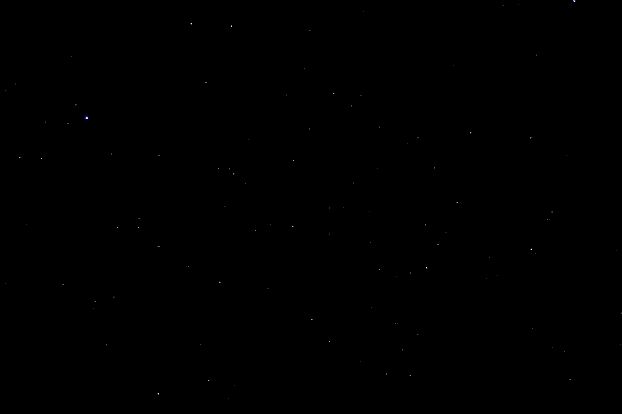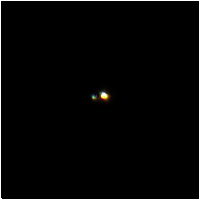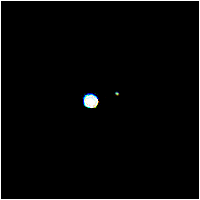

Hercules is a large constellation and the picture below includes the neighbouring constellations of Lyra and Corona Borealis. No star is brighter than magnitude 2.7 and few have names so, on the mouseover picture, I have given the Bayer designation priority and put the names in brackets.
The story of Hercules is a long one, so if you want to skip to the astronomical information, click here.

Herakles (Hercules to the Romans), a man of superhuman strength and endurance, was the son of Zeus by a mortal woman, Alkmene, the daughter of Elektryon, the king of Mycenae and son of Perseus. She was married to her cousin, Amphitryon, another grandson of Perseus, but the marriage remained unconsummated because Elektryon had decreed that it should remain so until vengeance had been wrought on the Taphians who, in a violent raid, had stolen his cattle and killed Alkmene's nine brothers. Having recovered the cattle, Amphitryon accidentally killed Electryon who was succeeded by his brother, Sthenelos, who banished Amphitryon from his kingdom. He took Alkmene to Thebes whose ruler, Kreon, purified him of his accidental manslaughter of Elektyron and then helped him invade the Taphians and kill their king. The deaths of the brothers avenged, Amphitryon could return home to consummate his marriage with Alkmene. Zeus saw his chance to sleep with Alkmene as he disguised himself as Amphitryon and described the success of his invasion of the Taphians; he even prolonged the night to three times its normal length so that he could enjoy Alkmene more fully. Eventually Alkmene gave birth to twin boys, Herakles and Iphikles but it was not clear which was whose son. However, when they were eight months old, two enormous snakes crawled into their bed. It is not clear who sent the snakes; it may have been Hera, Zeus's wife who was always intensely jealous of Zeus's affairs with other women and so had a hatred of Herakles all his life, or Amphitryon to establish which was his child. Either way, when the snakes entered their bed, Iphikles screamed but Herakles seized the snakes by their necks and throttled them.
Herakles grew up to be a strong man skilled in all the arts appropriate to a young man having been tutored by the best. By the time he was eighteen he was a magnificent specimen of manhood with a bow and arrows given to him by Apollo, a sword from Hermes, a golden breastplate from Hephaistos, horses from Poseidon, a robe from Athene, and he had cut himself a great club which remained his favourite weapon. His first great exploit was to hunt down the lion that was preying on the sheep on Mount Kithairon. It took him fifty days to track it down and during that time he stayed with Thesbios, the king of Thespiai, and managed to father a son with each of Thesbios's fifty daughters and twins with the eldest and youngest (with their father's full encouragement, it must be said). On the way home he encountered the heralds from Erginos, the king of Orchomenos, demanding the annual tribute from the Thebes of one hundred head of cattle. Herakles cut off the ears, noses and hands of the heralds and hung them round their necks and sent them back to Erginos. Erginos was somewhat upset by this and marched on Thebes to be met by an army lead by Herakles. Erginos was killed and Herakles imposed a tribute of two hundred head of cattle on the people of Orchomenos. Kreon was delighted and rewarded Herakles with marriage to his daughter, Megara.
The marriage was a happy one and they had several children, but Hera, for ever resentful of this son of Zeus by a mortal woman, inflicted him with a homicidal rage during which he killed his wife and all their children. On returning to sanity, he was overcome with grief and remorse and exiled himself to Thesbios for ritual purification and thence to the Oracle at Delphi for advice. The Oracle told him to go to Tirnys and to serve the king of the Argolid, Eurystheus, for twelve years and to carry out any task that might be assigned to him. (This was particularly poignant as it had been Zeus's intent to make Herakles king of the Argolid, but had been tricked by Hera into making Eurystheus king in stead.) These were the famous twelve labours. To describe each of these labours here would make this page unreasonably long and few of them give rise to constellations, so I have decided to recount them elsewhere. Here I will simply list them and mention if they are related to a constellation. If I have a picture of this constellation, the reference will be a link.
Having finished his servitude to Eurystheus, Herakles had various adventures during which he seemed to collect grudges. He also had another fit of murderous rage in which he killed Iphitos, son of Eurytos king of Oichalia, who had been an ally in a dispute with Eurytos over his daughter Iole. To atone for this murder, Herakles was enslaved for three years to Omphale, Queen of Lydia. Although he spent much of his time helping the women with their spinning, he found time to dispatch several troublesome beings and fathered a son with the Queen before she released him. Herakles decided it was time to settle a lot of grievances built up during his labours. Having settled many of them by killing the offender, his thoughts turned again to marriage. He wooed Deianeira, daughter of Oineus, king of Kalydon. She was already being wooed by the god of the great river, Archeloos. Like most water divinities he had the power to change shape and came to her in various monstrous manifestations, so Deianeira felt relieved when the comparatively normal Herakles came calling. The two men fought for her hand and, to Deianeira's relief, Herakles won, breaking off one of the god's horns in the process. To get it back, Archeloos gave him the horn of Amaltheia, the Horn of Plenty that provided limitless food and drink—no doubt a welcome gift to Herakles who had a voracious appetite. He married Deianeira and they lived for some time at Kalydon until, in an unfortunate accident, Herakles killed Oeneus's cupbearer. They left and went to live with his old friend Keux, king of Trachis.
The route from Kalydon to Trachis took them across the river Euenos, where the centaur, Nessos (who had escaped from a former conflict with Herakles), was acting as a ferryman. (Centaurs are horses with the upper half of a man where the head should be—remarkable creatures.) Herakles was happy to wade the river himself but willingly paid Nessos to carry Deianeira across. Nessos tried his best to rape her but did not succeed. However Herakles could not forgive the attempt and shot Nessos with one of his poised arrows. As he died, Nessos planned his revenge and persuaded Deianeira to collect some of his blood from the wound telling her that it would act as a love potion if ever Herakles should appear to be interested in another woman.
Herakles decided it was time to get revenge on Eurytos, king of Oichalia, who had refused to give him his beautiful daughter, Iole, whom he had offered as the prize in an archery competition which Herakles won. He invaded Oichalia with an army, sacked the city, killed Eurytos and his sons, and carried Iole off as his concubine. He sent her and some slaves ahead as he journeyed home. When Deianeira saw how beautiful she was and realised that she herself was an ageing woman, she feared that Herakles might lose his love for her. So she got the love potion
from its hiding place, smeared it on a cloak that she sent to her husband. It reached Herakles as he and his son, Hyllos, were preparing a sacrifice to Zeus. Herakles put on the robe and promptly felt the poison eating into his flesh like acid. Hyllos carried him home in agony and cursed his mother for murdering his father. Realising that she has caused the death of her beloved husband and lost the love of her son, Deianeira killed herself with a sword. Herakles instructed Hyllos to take him to Mount Oita and there prepare him a funeral pyre. Herakles lay on the pyre preferring death by burning rather than the agony of the poison, but nobody would light it. Finally the Argonaut, Poias king of Malis, came by and agreed to light the pyre. For this favour, Herakles gave him his bow and unerring arrows (which much later would play a part in the taking of Troy by the Greeks). As the pyre burned there was a clap of thunder and Zeus took his son into Olympos and made him immortal with the gods.
At last Hera was reconciled with Herakles and gave him her daughter, Hebe, to be his immortal wife. Zeus honoured his son by creating the constellation in the sky depicting him on his knees with his club raised to commemorate his battle with the Ligurians when he was forced to his knees but fought valiantly on.
Hercules is a large constellation but contains no stars brighter than 2.2 (&gamma), but does contain two bright clusters, M13 and M92. I am saddened that neither of these appears in my picture despite being rated at magnitudes 5.7 and 6.1, but I have indicated their positions on the mouseover. The constellation can be difficult to identify in typical light-polluted skies, but it is roughly one third of the way from Vega to Arcturus. Rosalgethy (α) was only the fifth variable star to be identified (by William Herschel in 1759). It is a slow semi-regular variable with a period of around 90 - 100 days with a range generally between 3.1 and 3.7 although somewhat greater deviations have been observed. It is a huge star probably as large as 400 million kilometres in diameter and with a surface temperature well below 3000 C and is very bright in the infrared. It is also a double star, the companion being magnitude 5.1 with a separation of almost 5 arc-seconds. This secondary is a close double with a period of 51 days. ζ is another binary with a period of 34.5 years so its separation varies quite quickly. δ has an eighth magnitude companion but it is an optical double the fainter star being much more remote then the brighter one which is magnitude 3.1.
The picture was taken with a Cannon 1000D camera fitted with an 18-mm lens at f/4 and ISO 1600. Contrast, brightness and gamma were adjusted to remove background glow and to enhance the stars.
Both pictures were taken with a DFK 21AF02 camera at prime focus of my LX200. North is at the top.
The primary star of α-Herculis is a red giant star whose diameter has been measured by interferometry as 0.034 arc-seconds which corresponds at a distance of 110 parsecs to 280 million kilometres or 1.84 AU (so put in place of the Sun it would extend beyond the orbit of Mars). The secondary is a double star consisting of a yellow giant and a yellow-white dwarf.
The primary of δ-Herculis is also a large star, about twice the size of the Sun. The secondary is not associated with it as it has a different proper motion, so δ is not a binary star.
 |
 |
|
| Alpha Herculis. Magnitudes 3.5 and 5.4 Separation 4.7 arc-seconds (570 AU) Period ~3600 years |
Delta Herculis. Magnitudes 3.1 and 8.2 Separation 8.9 arc-seconds |